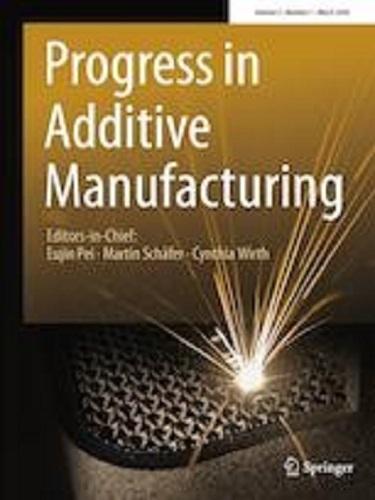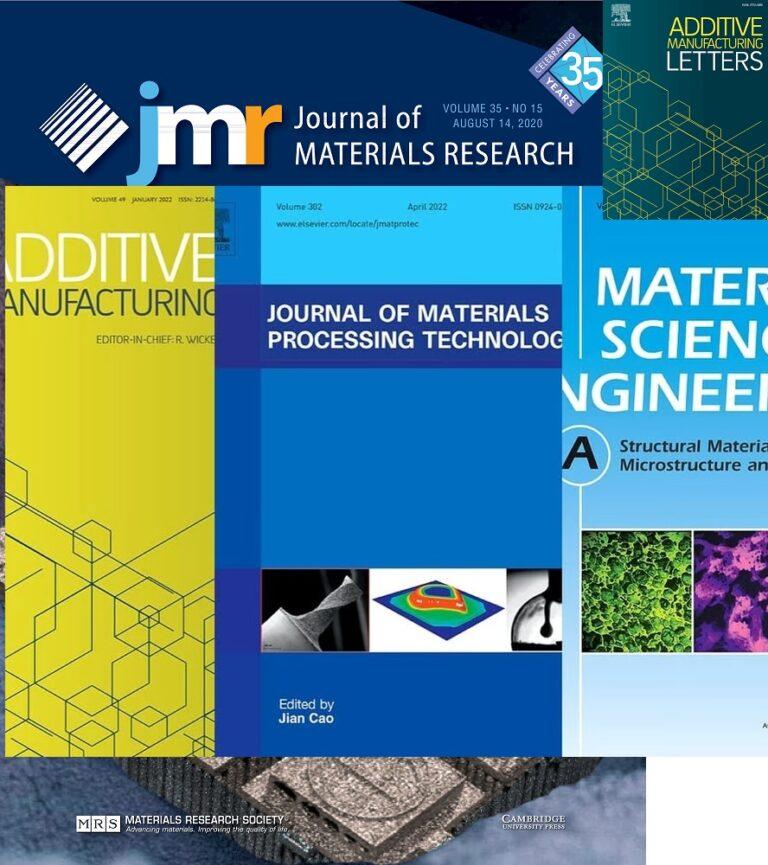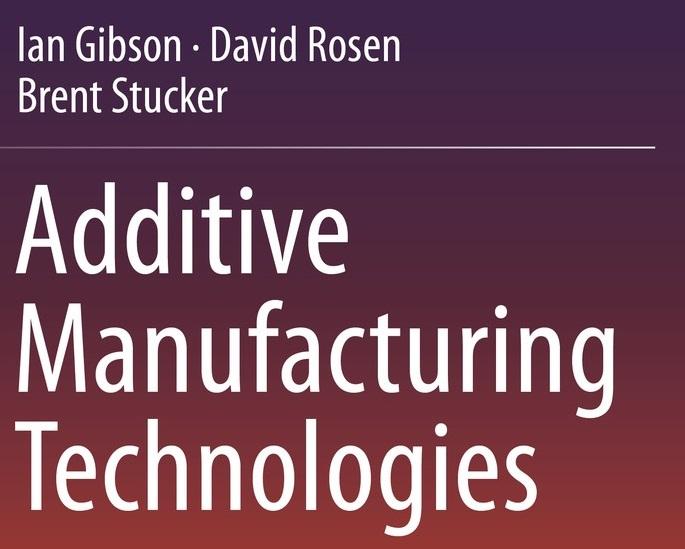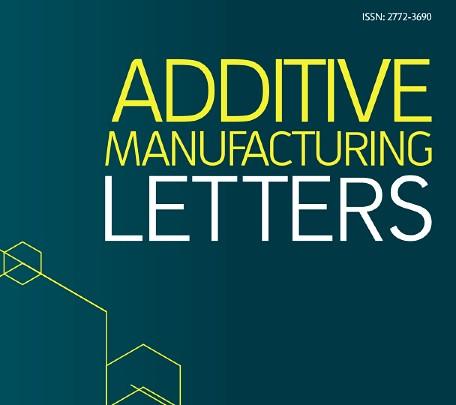Progress in Additive Manufacturing: A Look at the Latest Trends and Developments
Introduction to the Journal “Progress in Additive Manufacturing”
Sure, here is a simple and concise introduction to the journal “Progress in Additive Manufacturing”:
“Progress in Additive Manufacturing” is a scientific journal that shares unique research. It focuses on new methods in Additive Manufacturing (AM) processes and technologies. The journal serves as a bridge between academia and industry, providing valuable data1
Springer Verlag, a renowned publisher of scientific literature, publishes the journal in Germany2. It shines a light on valuable innovation in AM, paving the way for advancements in the field.
In the upcoming sections, we’ll explore the journal’s publishing model. We’ll also explain the submission process. Lastly, we’ll discuss the journal’s impact on additive manufacturing.
Brief description of the journal and its focus
“Progress in Additive Manufacturing” is a well-known scientific journal. It offers a platform for sharing original research. This research is related to Additive Manufacturing processes and technologies. It emphasizes both established and emerging aspects of AM, offering industrially relevant results and data. The journal has a keen interest in presenting and discussing novelties throughout the value chain of AM. The journal values simulation methods in all processing steps. It appreciates the use of artificial intelligence and data analytics. These technologies enhance prediction and control capabilities. It also encourages analysis of results in the broader context. This includes contributions to the circular economy and resource efficiency. Environmental aspects are also a key focus2.

Information about Springer Verlag
“Progress in Additive Manufacturing” is a journal published by Springer Verlag. Springer is a global leader in scientific, technical, and medical publishing. They offer a broad range of innovative products and services. Originally, in 1842, they established the company in Berlin, Germany. It boasts a vast collection of eBooks, journals, and professional reference works2.
Springer Verlag greatly impacts academic publishing. They commit themselves to serve the entire research community. They assist authors in sharing their findings. Springer Verlag allows researchers to find, use, and reuse research. They provide solutions for libraries. They aid research organizations in spreading and commercializing their work.
Journal’s Publishing Model
The “Progress in Additive Manufacturing” journal employs a hybrid publishing model, termed the transformative journal model. This innovative approach presents authors with both traditional and open-access publishing options. In essence, it offers a bridge between the conventional subscription-based model and full open-access publishing.
Firstly, under this transformative model, authors can opt to have their work behind a paywall, accessible to readers with a subscription to the journal or those who pay a one-time fee. This path is akin to traditional scholarly publishing practices.
Conversely, authors can also choose to make their work openly accessible to all readers, irrespective of subscription status. This Open Access option removes barriers to reading and interacting with the research, potentially broadening the audience and impact of the work. It’s crucial to note that this option may require an article processing charge (APC), often borne by the author, their institution, or funding body.
In summary, the hybrid transformative journal model of “Progress in Additive Manufacturing” provides a flexible and inclusive platform for authors to disseminate their research, catering to a variety of publication preferences. This model supports the evolving landscape of academic publishing, fostering increased accessibility and visibility of research in the field of additive manufacturing.
Submission and Acceptance Process
The “Progress in Additive Manufacturing” journal operates a comprehensive and efficient process for the submission and acceptance of papers. The procedure ensures that we meet the journal’s high standards of academic and technical rigor in all submissions.
Starting with submission, the journal requires authors to submit their papers online. Authors must follow the provided guidelines to ensure their work aligns with the journal’s scope and style. It’s essential to present original and significant research related to established and emerging additive manufacturing processes and technologies.
Once a paper is submitted, it enters the peer-review stage. This journal employs a double-blind peer-review system, ensuring impartial evaluation of the content. Under this system, neither the authors nor the reviewers know each other’s identities, thus providing an unbiased critique of the work.
A notable feature of this journal’s submission process is the time efficiency. The median duration from submission to the first decision is 65 days. This relatively short review time means authors can receive feedback and potentially have their work published quicker than in many other journals.
After the review, the journal may accept the papers as they are, accept them with revisions, or reject them. If authors need to revise, they will receive reviewers’ comments to address before resubmitting. When the journal accepts a paper, it proceeds to the publication stage.
In conclusion, “Progress in Additive Manufacturing” designs its submission and acceptance process to be transparent, efficient, and rigorous. This ensures the publication of high-quality, impactful work in the field of additive manufacturing.
Description of the peer-review system, which is double-blinded
Peer review is a cornerstone of academic publishing, providing a system for researchers to evaluate the work of their peers and ensure only high-quality, valid research is published. There are three primary types of peer review: single-blind, double-blind, and open review.
In a single-blind review, the identity of the reviewers is hidden from the authors, but the reviewers are aware of the authors’ identities. This model protects reviewers from potential backlash while critiquing the work of their peers but may introduce bias based on the authors’ identities or affiliations.
In contrast, an open review system is fully transparent, with the identities of both authors and reviewers known to each other. This model encourages open dialogue and accountability but may deter some reviewers due to the loss of anonymity.
The “Progress in Additive Manufacturing” journal employs a double-blind peer review system. In this model, the identities of both the authors and the reviewers are kept confidential. This approach aims to eliminate bias as much as possible, allowing the content of the paper to be evaluated solely on its merits. The reviewers don’t know who the authors are, and vice versa.
By using a double-blind review, the journal ensures that the review process is as fair and impartial as possible. It allows reviewers to provide honest feedback without fear of potential repercussions and ensures that authors receive a fair evaluation, regardless of their reputation or institutional affiliation. In this way, the journal maintains the integrity and quality of the research it publishes.
Highlighted Published Articles at Progress in Additive Manufacturing
Introducing a brief overview of Highlighted Published Articles, we will proceed to showcase the summaries of the top five most cited papers, based on Scopus data. Let’s delve into these seminal works:
1. Powder flowability characterization methodology for powder-bed-based metal additive manufacturing, Voegtlin M., Bauer T.; Wegener K.
This study focuses on the critical role of suitable powder materials in powder-bed-based additive manufacturing. The quality of the parts produced greatly depends on numerous parameters during the build process, necessitating a detailed evaluation of the powders. Key among these assessments is powder flowability, which ensures the formation of high-quality powder layers. The research aims to establish parameters for assessing metal powders’ flowability for selective laser melting (SLM). The evaluation is based on a statistical analysis of powder avalanche angles and powder surface fractals, which provide insight into inter-particle forces. The study analyzed 21 different Fe- and Ni-based powders, finding correlations between powder avalanche angles, surface fractal, particle shape, and optically assessed flowability. The findings allow for a quantitative evaluation of powder flowability, aligning with experiences in powder-bed-based additive manufacturing, specifically SLM.
2. Powders for powder bed fusion: a review, Vock, Silvia, Klöden, Burghardt, Send mail to Klöden B., Kirchner, Alexander, Weißgärber, Thomas, Kieback, Bernd
The quality of the powder in powder bed-based additive manufacturing is crucial for both the process performance and the properties of the final product. Despite general agreement on this, a thorough understanding of the relationship between powder properties and part properties is still missing. Numerous studies have been conducted on select powder properties and their impact on the process and final product, but there’s still no definitive guidance on powder requirements for specific process performance. This gap in knowledge can be attributed to a lack of consensus on the best techniques for powder characterization in the context of additive manufacturing. This review aims to evaluate these elements of knowledge and provide an overview of the current state of the art.
3. Influence of processing parameters on the evolution of melt pool, porosity, and microstructures in Ti-6Al-4V alloy parts fabricated by selective laser melting, Dilip, J.J.S., Zhang, S., Teng, C., Pal, D., Stucker, B.
Selective laser melting is a method for creating 3D parts by melting and solidifying metal powder particles, track by track and layer by layer. This study investigates the effects of laser power and scan speed on the development of the melt pool, porosity, and the impact of multiple thermal cycles on the microstructure of parts made using this method. The study used Ti-6Al-4V pre-alloyed powder to create single-track deposits and larger parts, under various combinations of laser power and scan speed.
Examination of the cross-sections of these deposits and parts allowed for evaluation of the shape, size, and porosity of the melt pool. Low energy density created irregularly shaped porosity from un-melted powder particles, while high energy density led to rounded porosity due to keyhole effects. Proper power and speed combinations resulted in fully dense samples. Moreover, the study highlighted how process conditions influenced microstructural development. The findings demonstrate a strong correlation between single-track melt pool geometries, porosity in larger parts, and the unevenness of microstructures during deposition.
4. Effects of part build orientations on fatigue behaviour of FDM-processed PLA material, Afrose, M.F., Masood, S.H., Iovenitti, P., Nikzad, M., Sbarski, I.
This study examines the fatigue behavior of polylactic acid (PLA) parts made using fused deposition modelling (FDM). PLA is increasingly used in open-source FDM machines for engineering applications. Yet, little data exist on the fatigue performance of FDM-processed PLA. The study focuses on how build orientations affect the tensile fatigue properties of PLA. Test specimens were printed in three different orientations and cyclically tested at various stress values. Results showed that parts in the X build orientation demonstrated higher tensile stress in static loading. However, under cyclic loading, parts in the 45° orientation showed better fatigue life. This research helps fill the knowledge gap on the fatigue characteristics of FDM-processed PLA parts.
5. 3D-printing and advanced manufacturing for electronics Espera, A.H., Dizon, J.R.C., Chen, Q., Advincula, R.C.
3D-printed electronics claim a substantial market share due to high-throughput production and customizability. The printing of various electronic components has become a major research focus in additive manufacturing. The adoption of new 3D-printing technologies could revolutionize several fields including flexible electronics and wireless communications. Challenges lie in printing new functional electronic materials and accommodating unconventional geometries. New 3D-printing systems must adopt comprehensive fabrication protocols. System designers and manufacturers will be crucial in scaling 3D-printed electronics from prototypes to mass production. This review provides a foundation for understanding these technologies, discussing methods, reviewing 3D-printing techniques, and outlining the future of 3D-printed electronics.
Impact Factor and Other Metrics
- Publisher: PIAM is published by Springer, a highly recognized and reputable publisher in the field of academic publishing.
- Indexing: The journal is indexed in multiple databases, including EBSCO Discovery Service, Google Scholar, SCImago, SCOPUS, and others, demonstrating its recognition in the academic community.
- Editor-in-Chief: The Editor-in-Chief of PIAM is Eujin Pei, a notable figure in the field.
- Publication Model: PIAM follows a hybrid publication model, including Open Access, which provides various options for authors to publish their work.
- Peer Review System: The journal uses a double-blinded peer-review system, a well-regarded and rigorous method for ensuring the quality of published articles.
- Impact Score: PIAM has an impact score of 4.97, which measures the average number of citations to recent articles published in the journal. This score has been rising year-on-year, indicating an increasing influence of the journal in the field.
- H-Index: The journal has an h-index of 20, meaning that 20 articles from the journal have each been cited at least 20 times. The h-index measures the productivity and citation impact of the publications.
- SJR Rank: The SCImago Journal Rank (SJR) of PIAM is 1.018, indicating its scientific influence based on citation counts and the importance of the citing journals.
- Quartile Ranking: PIAM is in the Q1 category for Industrial and Manufacturing Engineering, placing it in the top quartile of journals in this field.
- Overall Rank: The overall rank of PIAM is 3987, which is a ranking among all journals, not just those in the same field.
- ISSN Numbers: The electronic ISSN of PIAM is 2363-9520, and the print ISSN is 2363-9512.
- Abbreviation: The ISO 4 standard abbreviation of PIAM is ‘Prog. Addit. Manuf.’, which is used for indexing, abstraction, referencing, and citation purposes.
Contribution to the Field and Future Trends
The journal “Progress in Additive Manufacturing” significantly contributes to its field. It presents new research on established and emerging AM processes and technologies, expanding our understanding and practice of additive manufacturing. The journal is a platform for academia and industry, fostering collaboration and knowledge exchange.
The journal’s focus on AI and data analytics in AM and its emphasis on environmental aspects and the circular economy indicate key future trends. We can expect advancements in simulation methods, predictive capabilities, and a growing focus on sustainability in AM. These trends point towards a future where additive manufacturing is increasingly efficient, intelligent, and eco-friendly.
Conclusion
The “Progress in Additive Manufacturing” journal significantly contributes to the additive manufacturing (AM) field. It disseminates original and impactful research on established and emerging AM technologies and serves as a crucial platform for knowledge exchange between academia and industry. It welcomes contributions that use artificial intelligence and data analytics in AM and emphasize sustainability and the circular economy.
Key Points
- The journal focuses on AI, data analytics, and simulation methods in AM, pointing to future trends in the field.
- It promotes sustainability in AM, highlighting the importance of resource efficiency and the circular economy.
- It fosters knowledge exchange and collaboration, serving as a bridge between academia and industry.
- It has a rising impact score, reflecting its increasing influence in the field.
- It has comprehensive indexing, making it widely accessible to researchers worldwide.
- Springer Verlag, a reputable publisher in Germany, publishes the journal.
How to submit a research paper to “Progress in Additive Manufacturing” journal?
- Prepare Your Manuscript
Make sure your research paper is complete, well-structured, and fits the scope of the journal. It should include an abstract, introduction, methodology, results, discussion, and conclusion. Follow the formatting guidelines provided by the journal.
- Proofread and Edit
Check your manuscript for any grammatical, spelling, or punctuation errors. Ensure that the language is clear and concise. You may consider using a professional editing service.
- Write a Cover Letter
Prepare a cover letter addressing the editor of the journal. It should briefly outline the purpose of your study, its relevance, and why it is a good fit for the journal.
- Submission
Go to the journal’s website and look for the submission portal. You’ll need to create an account if you don’t already have one. Upload your manuscript and cover letter, and fill in any required information.
- Review Process
After submission, your paper will be reviewed by the journal’s editors and possibly sent out for peer review. Be prepared to make revisions as needed.
- Final Decision
If your paper is accepted, there may be further steps to finalize your submission, such as final formatting checks and payment of any required publication fees.
FAQs
The journal accepts scientific papers that report original and significant research related to established and emerging Additive Manufacturing (AM) processes and technologies.
As of 2021, the impact score is 4.97, which indicates the average number of times articles published in the past two years have been cited in the current year.
The median submission to first decision time is 65 days. However, this can vary depending on several factors.
The journal focuses on the value chain of AM, use of simulation methods in processing, use of artificial intelligence and data analytics to extend prediction and control capabilities, and the contribution to the circular economy, resource efficiency, and environmental aspects.
The journal follows a hybrid publishing model, which includes open access options.
You can submit your paper through the submission portal on the journal’s website. You’ll need to create an account, upload your manuscript and a cover letter, and fill in any required information.



